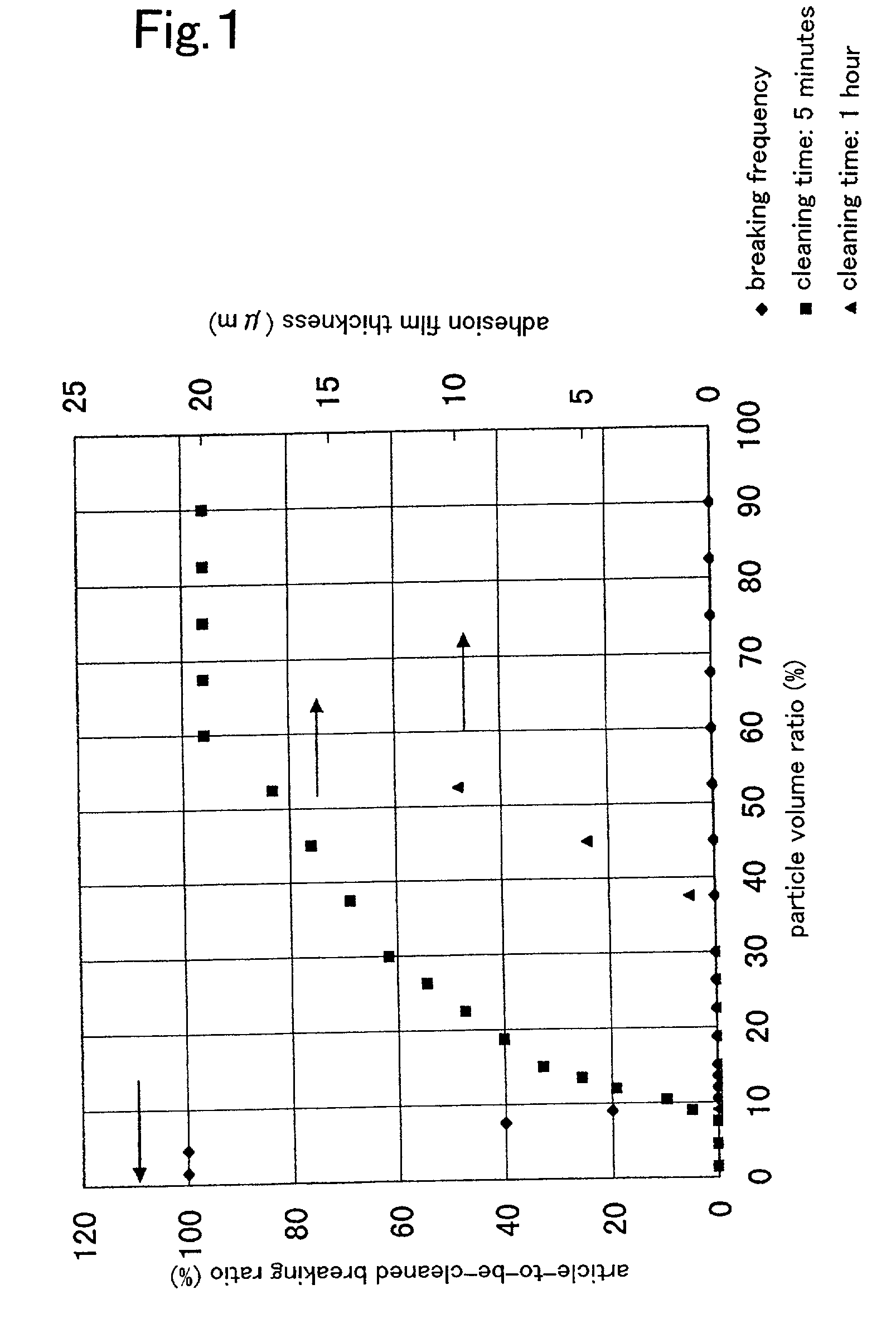Ultrasonic cleaning method
a cleaning method and ultrasonic technology, applied in the direction of cleaning process and equipment, cleaning using liquids, detergent compositions, etc., can solve the problems of large fear, contaminated surface, and broken articles befor
- Summary
- Abstract
- Description
- Claims
- Application Information
AI Technical Summary
Benefits of technology
Problems solved by technology
Method used
Image
Examples
embodiment
[0052] Embodiment
[0053] In the present embodiment, an experiment was conducted to perform ultrasonic cleaning of a piezoelectric unimorph assembly, which is a small structural body made of ceramics and being inferior in the breaking strength and in the breaking toughness, by adopting the ultrasonic cleaning method according to the present invention. Further, along with this, an experiment was conducted to perform ultrasonic cleaning of a piezoelectric unimorph assembly, which had been cut out from the same assembly matrix, by adopting the conventional ultrasonic cleaning method described in the beginning, as a comparison example.
[0054] Article-to-be-cleaned: It is a piezoelectric unimorph assembly 10a obtained by cutting an assembly matrix 10 of the piezoelectric unimorph assembly by the technique shown in FIG. 2, and is one such that, on one surface of a metal plate (SUS304) with a width of 0.25 mm, a length of 1.9 mm, and a thickness of 0.1 mm, a laminate-type piezoelectric elemen...
PUM
 Login to View More
Login to View More Abstract
Description
Claims
Application Information
 Login to View More
Login to View More - R&D
- Intellectual Property
- Life Sciences
- Materials
- Tech Scout
- Unparalleled Data Quality
- Higher Quality Content
- 60% Fewer Hallucinations
Browse by: Latest US Patents, China's latest patents, Technical Efficacy Thesaurus, Application Domain, Technology Topic, Popular Technical Reports.
© 2025 PatSnap. All rights reserved.Legal|Privacy policy|Modern Slavery Act Transparency Statement|Sitemap|About US| Contact US: help@patsnap.com



